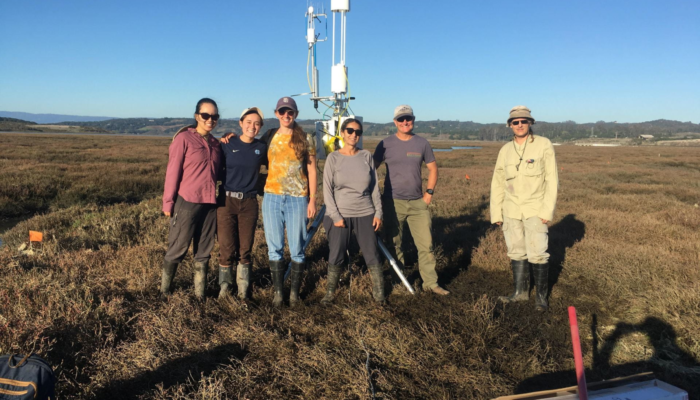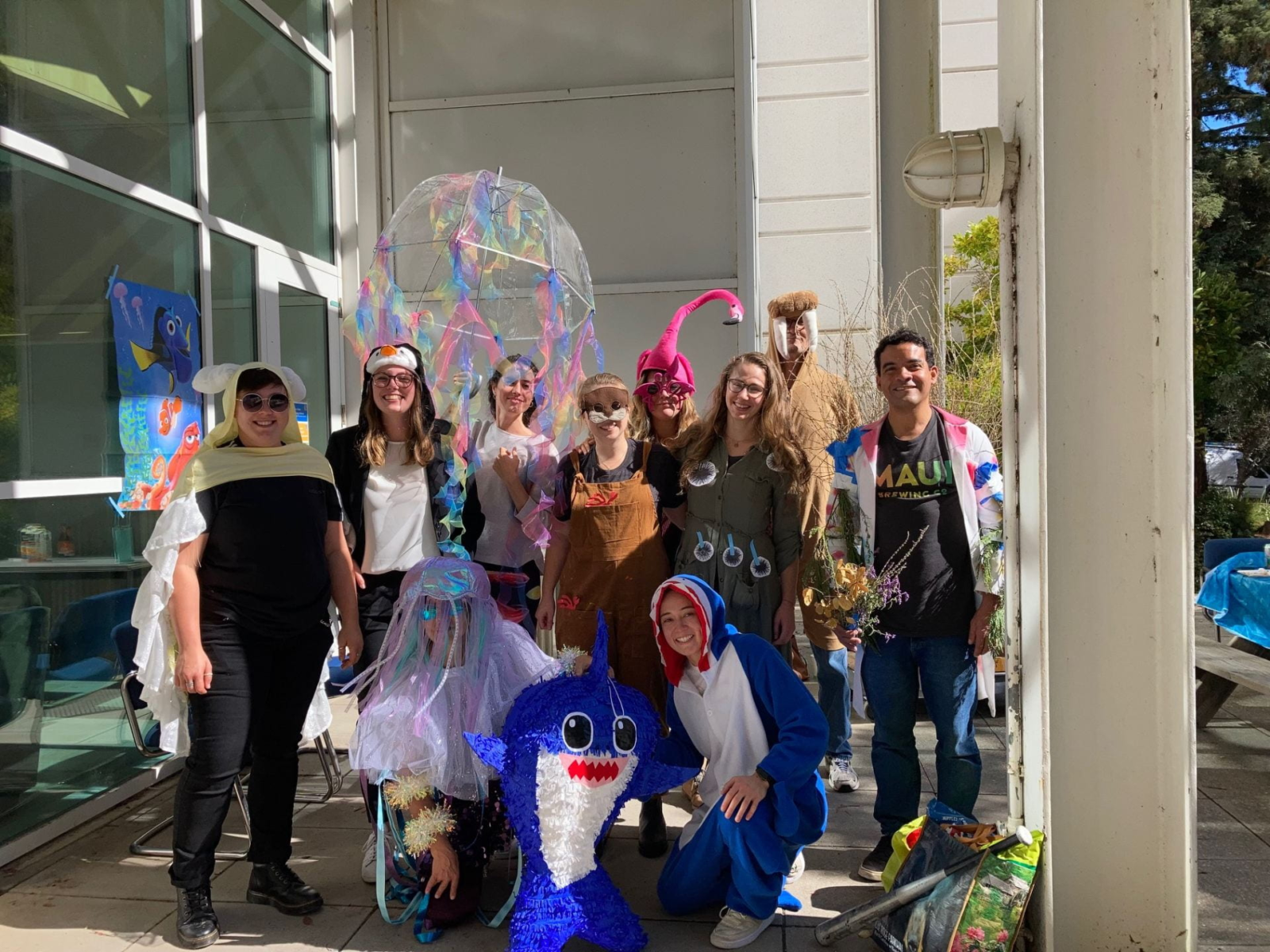
We spoke to Dr. Adina Paytan, Research Scientist at the Institute of Marine Sciences, University of California, Santa Cruz and Vladimir Ivanovich Vernadsky medal winner for 2022. The Vladimir Ivanovich Vernadsky medal is awarded annually by the Biogeosciences division to those who make an exceptional contribution to biogeosciences.
Can you tell us a bit about your background and how your career progressed to leading your own group as you do today?
I was always driven by curiosity; one of these kids that has questions about everything all the time – why this and how that – Seeking answers along with love of the outdoors, nature and the environment resulted in obtaining undergrad degrees in biology and geology followed by M.S. and PhD degrees in science education and oceanography. My education provided me with a versatile toolbox and a desire to apply it to a wide range of environmental challenges that change over time, as well as passion to share my excitement with others. This is reflected in my work which is interdisciplinary and involves collaborations with others and in my mentoring of my own group where I emphasize that I work for my student to facilitate and enable them to achieve their goals and aspirations. I expect my students to be willing to learn, motivated and to take ownership of their projects. By facilitating my students work and engaging in collaborations I also fertilize my own curiosity and keep learning new things all the time.
Your lab focuses on chemical and paeloceanography. What do you feel have been your main contributions to the subject area so far?
As a biogeochemist I use both chemical and isotopic tracers in diverse environmental samples such as water, sediments, aerosol, and vegetation to study present and past biogeochemical processes on a wide range of temporal (seasons to millions of years) and spatial scales (a small bay or the whole ocean). An overarching goal of my research is to link changes observed in the earth and ocean systems to global changes in climate and tectonics with an emphasis on human impacts. Work from my lab shed light on processes related to the carbon cycle like estimating present and past primary and export biological production and the processes (nutrient inputs from groundwater or atmospheric deposition and ecosystem structure) that impact productivity as well as longer term controls such as weathering, sedimentation or links to the sulfur cycle and the evolution of life.
Where do you see the field progressing in the future, what do you think are the gaps that we still need to better understand?
I think science will move more and more towards solving societally relevant challenges and unfortunately there are a lot of these that we need to consider from climate change to resource management. The best way of doing this is to work in diverse teams of physical and social scientists along with engineers and policy and decision-making practitioners that assemble to combine their expertise to solve specific practical problems in a just and effective way. Working within disciplinary silos or departments was okay for the 18 and 19th century and is not keeping up with time. Academic institutions must change and adapt to the needs of humanity and the environment. So, the gap and the hurdle is to move to a more holistic approach on all projects and research fronts.
You say that the overall goal of your research is to “link changes observed in the earth and ocean systems to global changes in climate and tectonics with an emphasis on human impacts”. Can you tell us a bit more about how you link biogeosciences to human impacts, which many people would see as traditionally being part of the social sciences?
I can give an example of a project I am currently engaged with in collaboration with other physical and social scientists, researchers from the humanities, educators, and artists. We are working on blue carbon sequestration in coastal wetlands. The project’s goal is to provide restoration guidelines that maximize societal benefits with emphasis on carbon sequestration and at the same time ensure the sustainability and biological diversity of these systems (co-benefits for humans and nature).
To achieve this, we will (1) delineate the natural processes and management practices within wetlands that control C dynamics; (2) assess the ecosystem services of wetland restoration and how they may be impacted by climate change; and (3) integrate environmental justice considerations, policy, and governance approaches to develop a framework and guidelines for incorporating coastal wetland restoration/conservation into local, state, and national adaptive management plans that emphasize co-benefits.
The project will assess the natural and human dynamics relevant for including coastal wetland restoration as a decarbonization solution, harnessing blue-carbon nature-based solutions that also offer adaptation opportunities and enhance community resilience and environmental justice to safeguard livelihoods in the face of climate change. The project also addresses important theoretical questions by investigating the conditions which facilitate collective action for management of complex, multi-scalar social-ecological systems (SES), innovating by using social network analytics to integrate SES and collective action theorizing. To achieve this, you need to be comfortable working across disciplines.
What has been your involvement with professional societies?
I have been an active member in the leadership of the sister society to the EGU the American Geophysical Union (AGU) and in that capacity served as a secretary for the ocean sciences section of AGU, organized meeting sessions, co-chaired the Ocean Science meeting, was on the science organizing committee for past meetings including the joined AGU-JpGU meetings and on various selection committees for awards and recognition. I am also active with the education section and try to promote and support the professional development and mentoring of early career scientists and to increase the representation of women and other groups in the geosciences. For the past 5 years or more I have led workshops and special sessions on science and society at the Goldschmidt Conference of the Geochemical Societies. These contributions and activities go beyond one society or another since most of the scientists are active in more than one society and with today’s communication platforms similar to the real-world challenges there are no boundaries.
Finally, what does it mean to you personally to have been awarded the Vladimir Ivanovich Vernadsky medal?
There are two reasons why being awarded this medal is important for me –
The first is that this is an indication of change in the right direction for EGU which is very nice to see. If one looks at award recipients until recently most awardees were white males – all deserving but not really an accurate representation of the membership of EGU – so seeing more women is a good sign of progress and hopefully representatives of other groups will also increase.
The second is that I feel that this specific award and the work of Vernadsky during his lifetime directly touches many of the values I stand for and the research I do. Specifically, he cared about education and served as assistant minister of education which is close to my heart.
As for research in his later years he focused on the effects living things have on the chemistry of the Earth and the interactions between life processes and the atmosphere recognizing the role of living organisms in the cycles of oxygen, nitrogen, and carbon dioxide present in the atmosphere. In fact, I think that he inspired the use of the term biosphere. And indeed, the interactions between the living things and the physical environmental setting are what I care about and study.
The BG divsion would like to congratulate Adina on her award and for sharing her experiences in this blog. You can find out more about Adina’s work on the Paytan Laboratory website.


